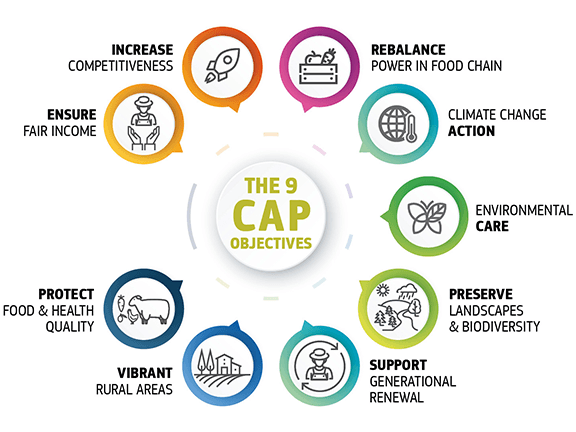PARSEC sectors: Environment, Food
Application fields: Agriculture, Energy & Natural Resources, Environmental, Pollution & Climate, Forestry, International Bodies, Managed Living Resources, Public Authorities
Keywords: agriculture, biodiversity, CAP, climate, compliance, environment, European Commission, food, policy, rural
The EU’s common agricultural policy (CAP) is a partnership between agriculture and society, and between Europe and its farmers. A common policy for all EU countries, it supports the production of food, development of rural communities, and environmentally sustainable farming. Since 1962, and throughout a series of reforms, the CAP has not only supported farmers in their efforts to supply EU citizens with good quality and safe food; it has also been guiding the implementation of sustainable agriculture across the EU. The latest amendment on the regulation, introduced in May 2018, attempts to modernise the implementation of checks for area-based payments and for cross-compliance requirements. This landmark change foresees that modern solutions such as geo-tagged photos, E-GNSS enabled receivers, and data from Copernicus Sentinel satellites are used to carry out checks.

The nine main objectives of CAP (see illustration) can be considered as objectives for Earth Observation (EO) services for agriculture and food security as well. The CAP explicitly encourages farmers to apply precision farming, and Member states to use Big Data and new technologies for monitoring and checks. EO data is already used as evidence when checking area-based CAP payments to farmers. The Sentinels for Common Agricultural Policy (Sen4CAP) project, set up by ESA in collaboration with the European commission, aims at providing CAP stakeholders such as Paying Agencies with validated algorithms, products, workflows and best practices for agriculture monitoring relevant for the management of the CAP. The project “PeRsonalised public sErvices in support of the implementation of the CAP” (RECAP) created a Software-as-a-Service platform to facilitate compliance with the CAP. Such projects, but also contracts with public authorities represent great business opportunities for EO service providers.
Beyond compliance checks, EO can support farmers to optimise production in a more sustainable way: monitoring their crops; analysing soil, climate, and weather conditions; enabling variable rate application of seeds, water, and fertiliser; or evaluating damage for insurance or compensation.
Leave A Comment
You must be logged in to post a comment.